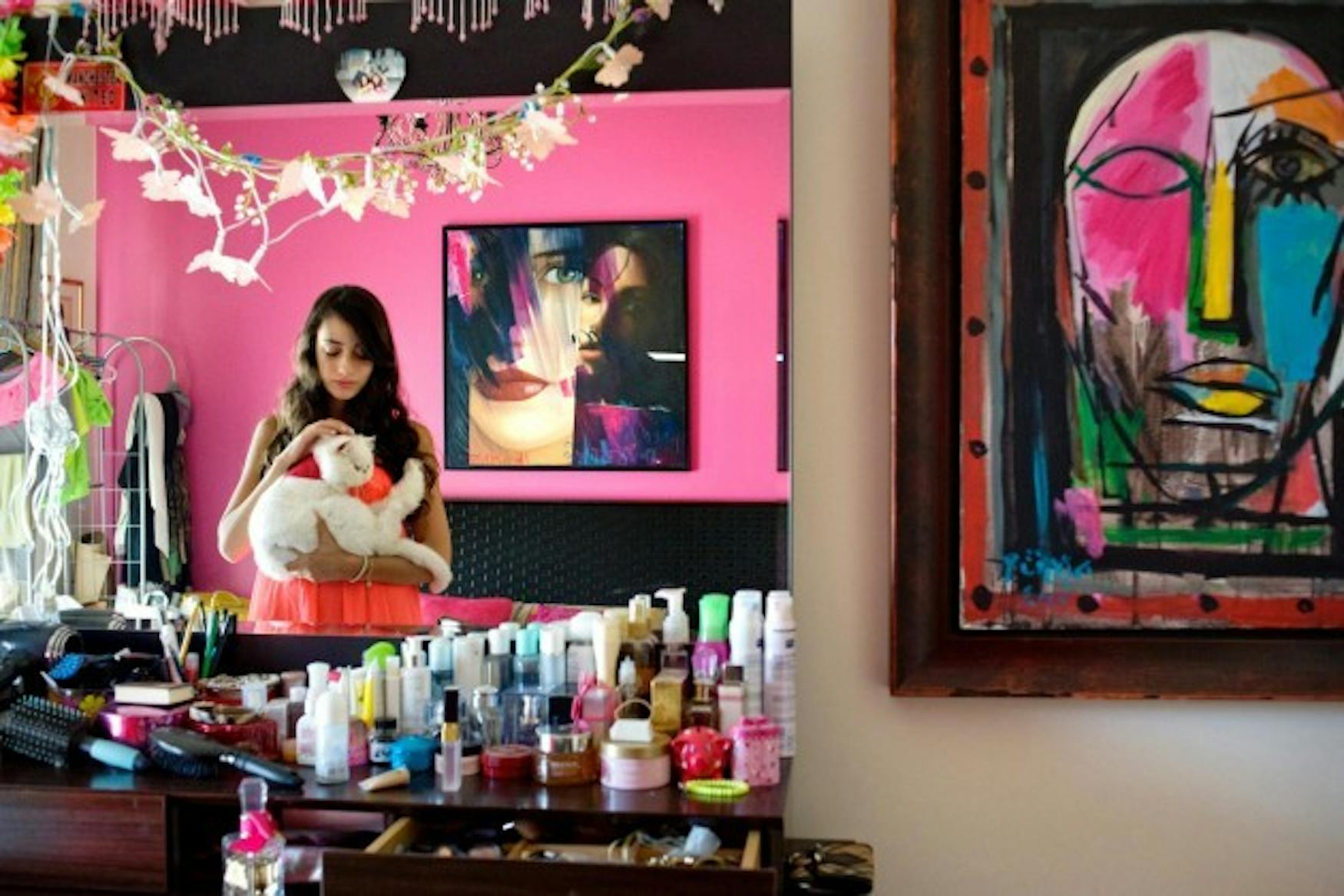Photography challenges cultural notions
This fall, the Museum of Fine Arts in Boston will deconstruct the Western world's preconceived notions of the Arab world with the exhibition She Who Tells a Story: Women Photographers from Iran and the Arab World. Utilizing the work of a dozen female photographers from Iran and other Arabic countries, the exhibit works to create a multi-layered narrative. With over 90 photographs and two videos, one could easily feel overwhelmed by the sheer volume of images. Yet curator Kristen Gresh organizes the images into three sub- themes: Constructing Identities, Deconstructing Orientalism and New Documentary.
Constructing Identities explores contemporary identity in a region that is in flux. Rania Matar's series A Girl and her Room offers intimate portraits of young women on the cusp of womanhood. Cocooned within the safe space of their bedrooms, these adolescent females are introspective in their highly distinct spaces. Though each photograph is unique and personal to the subject, as a whole the series highlights the shared, collective experience of transitioning into adulthood in the urban context.
While Matar's series offers her lens to growing pains, Newsha Tavakolian's fine art photography series Listen showcases the faces of professional female singers. These women are comfortable as singers, yet are forbidden from publically performing in Iran. While a dichotomy exists between the public and private personas of these women, they are, in this one instance, beautifully frozen in a moment of rapture. Eyes closed, lips parted, heads covered and totally absorbed in singing, these women are not only unconscious of the glittery, glamorous backdrop behind them-but are also completely defined by the act of singing. The power of these women's singing voices are diminished in the public sphere. Likewise, while viewing the images, we, as viewers, are incapable of hearing the voices of these women, but are nonetheless impressed by both the beauty and purity of their talent through the photographs before us.
She Who Tells a Story also grapples with the lasting legacy of Orientalism. The Orientalist tradition developed as a result of European and North American intellectuals' and artists' romanticized fantasies of the lands to the East. In the 21st century, Lalla Essaydi revisits the exotic, female other in her triptych Bullets Revisited. Rather than depicting the famous odalisque, Essaydi's subject lays flat across a bed. At first glance, one is captivated by the intricate gold and silver motifs that cover the wall, the floor and the bed. Yet, a closer inspection reveals that the gold and silver decorations are actually bullet casings. By using bullet casings Essaydi is able to not only refer to the current physical violence in the Arab world but also comment on the cultural violence and wounds of the seemingly benign Orientalist tradition. In that moment, when the viewer realizes the ornamentation in the imposing triptych is bullet casings, the entire power of the piece changes as it takes greater significance. This is no longer a sexualized image of an Arab woman. This is a response to cultural, structural and direct violence.
Meanwhile, New Documentary explores the various ways the medium of photography is being used to represent the current political and social climate of Iran and the Arab world. In the series NIL, NIL by Shadi Ghadirian, the public and private, female and male, are juxtaposed in photographs that connote the style of still life paintings. A light and vibrant silk scarf is hung next to a clunky, grey metal hard hat. Atop a dining room table, a fruit basket masks the hiding grenade. This series, which combines the soft elements of the domestic space with the hard and cold objects of war, questions how the two extremes can co- exist in one space.
In an equally surprising series of photographs, Women of Gaza by Tanya Habjouqa, the artist ex- plores how the inhabitants of occupied Gaza experience everyday life while living in such a confined and limiting space. The images are not depressing or upsetting. They are the opposite. Infused with wonder and joy, viewers gaze at a young girl soaring into the air on a swing in her garden. Another woman eagerly turns her camera toward the viewer and a gaggle of girls take to the sea as they giggle and water sprays into their faces.
She Who Tells a Story runs until Jan. 12, 2014 and also features the following artists: Jananne Al- Ani, Boushra Almutawakel, Gohar Dashti, Rana El Nemr, Rula Halawani, Nermine Hammam and Shirin Neshat. Photographed by women from Iran and the Arab world, these images capture the moments and tell the stories that are forgotten in the everyday news of the world. With the aid of their cameras and the various facets of Iranian and Arab culture and life at their hands these women photographers are able to display the stories and voices of a people who are frequently misunderstood and misrepresented.




Please note All comments are eligible for publication in The Justice.